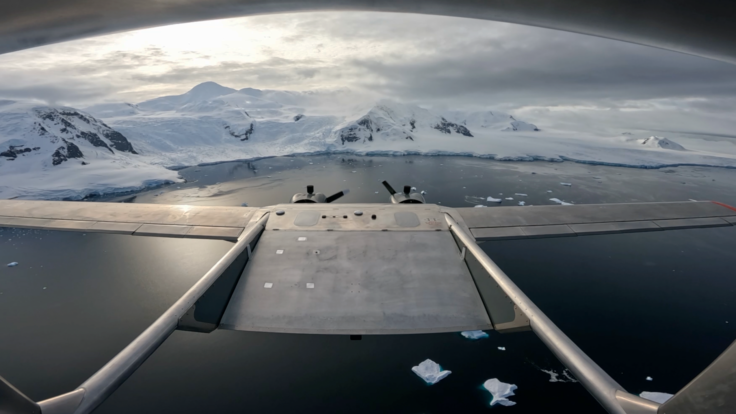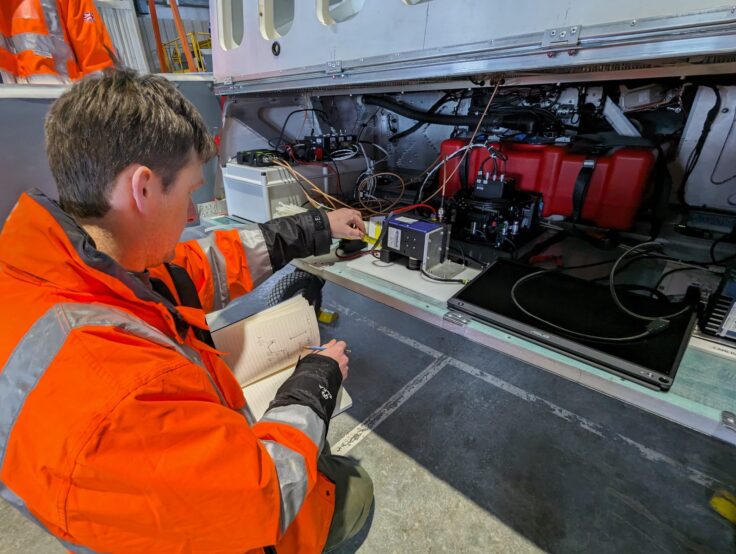A team testing the Windracers ULTRA drone in Antarctica has shared the first video footage of the aircraft flying autonomously over British Antarctic Survey's (BAS) Rothera Research Station and its nearby islands.
Scientists and engineers, from BAS and Windracers, are testing the uncrewed aerial vehicle (UAV) in Antarctica to check its suitability for future use. Over the last few weeks the UAV has flown over 720kms collecting scientific data that could enable researchers to widen the range of scientific research they do to understand how Antarctica is being affected by environmental change.
If successful, the new drone platform could represent a major addition to BAS's scientific capability on the frozen continent - offering the potential to increase airborne science and accelerate research through increasing the current BAS operations.
Designed for extreme environments like Antarctica, the Windracers ULTRA UAV is a fully autonomous, twin-engine, 10-metre fixed-winged aircraft, capable of carrying 100 kg of cargo or sensors up to 1000 km.

Incorporating a high level of redundancy, the ULTRA can continue to fly even if one of the engines or components is damaged or fails, and has been designed to be fixed in the field with a minimal number of parts. It can take off, fly and land safely with minimal ground operator oversight thanks to its sophisticated autopilot system Masterless™.
Carl Robinson is head of Airborne Survey Technology & UAVs at BAS and is with the team at Rothera Research Station in Antarctica. He says:
"So far so good, everything has very much gone to plan and the Windracers ULTRA has shown that it can robustly gather a range of science data. Our initial flights have been up to 1.5 hours long with even longer missions planned in the next couple of weeks."
Airborne surveys are used for a range of science disciplines relevant to polar science, including climate science, glaciology, geology and the study of ocean ecosystems.
Tom Jordan, the lead scientist on the project says:
"It's very early days, but initial data is already showing the platform can collect high quality environmental information useful to a range science disciplines".

During this season's testing phase, the Windracers ULTRA will be deployed to:
- survey protected environmentally sensitive areas and assess the marine food chain (krill) using cameras
- investigate tectonic structures with magnetic and gravity sensors
- assess ice sheet structures using airborne radar
- test an atmospheric turbulence probe to study processes coupling the ocean and atmosphere
Stephen Wright, Founder and Chairman of Windracers, says:
"We firmly believe that high endurance, high payload autonomous drones have a valuable role to play in the future of environmental research. So it has been hugely rewarding to see the team testing the ULTRA drone in Antarctica and, while it is early days, we're very encouraged by its achievements so far and the feedback we've been receiving from the scientists and engineers on the ground."
The ground-breaking project is being funded by Innovate UK's Future Flight 3 Challenge and is part of its pilot programme called 'Protecting environments with uncrewed aerial vehicle swarms', aimed at demonstrating how advanced drone technology can be used to gather environmental data in Antarctica.






